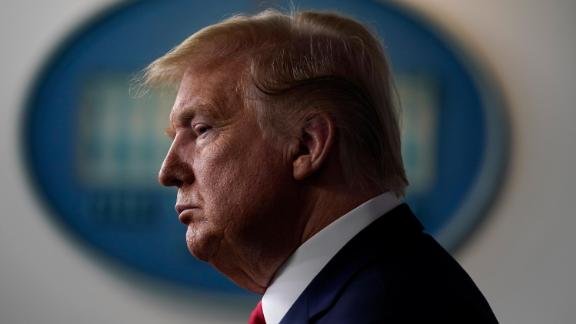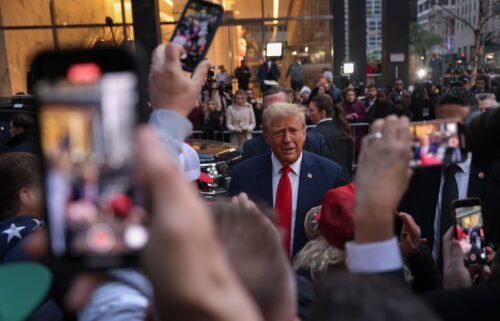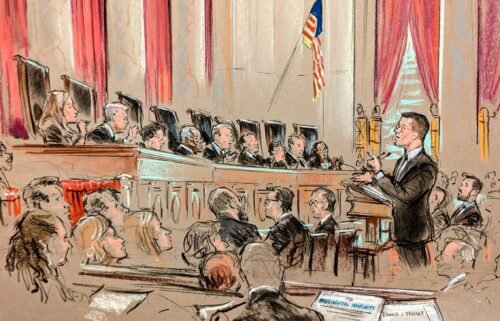How Trump lost the public on coronavirus

With just 198 days until Election Day, 2020 is in full swing — even in the midst of the coronavirus crisis. Every Sunday, I outline the top storylines you need to know to understand the upcoming week on the campaign trail. And they’re ranked, so the No. 1 story is the most important of the coming week.
5. VP, VP, VP: One of the political traditions that hasn’t been much affected by the coronavirus crisis is the unending jockeying among and speculation about who former Vice President Joe Biden will choose as his running mate.
(My latest look at the 10 women most likely to wind up as the pick is here. Or you can watch the video version here.)
The big storyline to keep an eye on the veepstakes this week is how the contenders choose to deal with the possibility of being picked. Act interested? Or pretend this isn’t even something you have ever considered or heard about?
Former Georgia state Rep. Stacey Abrams went with the former — bigly — in an interview with Elle magazine, in which she said plainly: “I would be an excellent running mate.”
Put Minnesota Sen. Amy Klobuchar very much in the latter category. Asked about the possibility by Michael Smerconish on CNN Saturday, Klobuchar said that she would “not engage in hypotheticals,” adding that Biden “knows what it takes to be a good vice president. He’s going to make that decision.”
So, Abrams is way on one end of the spectrum while Klobuchar is about as far as you can get on the other. Watch where the other major contenders — California Sen. Kamala Harris, Nevada Sen. Catherine Cortez Masto, Michigan Gov. Gretchen Whitmer — land on the question this week.
And yes, they will all be asked about being VP. Over and over again.
4. Biden (still) struggling to break through: Quick, name how many times you either thought about or read about Joe Biden in the past week.
It’s likely not very many. (And, for many, it was related to the allegations made by Tara Reade, a former Senate staffer.
The simple truth is that Biden has found himself on the outside looking in on the national conversation since coronavirus gripped the country a month ago.
Yes, in that time, the former vice president won more primaries and became the de facto Democratic nominee against President Donald Trump. But all of that has been overshadowed by the coronavirus crisis — and Biden, who is not currently in elected office, has struggled to get his voice heard on the issue in any meaningful way.
It’s not for want of trying. His campaign has organized virtual press conferences, released policies aimed at combating the spread and put Biden all over cable TV.
But he still feels like a secondary or tertiary voice on the crisis. And it’s not at all clear to me how Biden can change that — given that he’s not going to be a governor or president in the next month. And he’s still largely confined to his house in Delaware due to stay-at-home orders.
3. A(nother) bipartisan spending deal?: Last week, the Payroll Protection Program — a fund established in the $2 trillion-plus economic stimulus package passed by Congress last month designed to help small business stay afloat — ran out of money.
But there were signs everywhere on the Sunday shows that a deal to provide another $300 billion for the PPP — as well as another $150 million for hospitals, testing and loan programs favored by congressional Democrats — is very close.
“I think we’re very close to a deal today. I’m hopeful that we can get that done,” Treasury Secretary Steve Mnuchin told CNN’s Jake Tapper on “State of the Union.”
And House Speaker Nancy Pelosi sounded a similarly optimistic note in an interview on ABC’s “This Week,” suggesting the two sides are “very close to agreement.” She added: “Everything we’ve done — three bills in March were all bipartisan. This interim package will be, too.”
Which is noteworthy! Not just because Congress doing anything bipartisan is rare but also because of Mnuchin’s ability to negotiate with Pelosi and Senate Minority Leader Chuck Schumer.
Mnuchin as deal-maker, of course, has already triggered some blowback among Republicans that he is giving away too much to Democrats. Keep an eye on whether Trump gives credence to that theory this week.
2. Here come the protests: What began last week in Lansing, Michigan as a protest against what some perceived to be overly stringent executive orders by Gov. Gretchen Whitmer (D) has quickly spread to all corners of the country. (Rallies — albeit smaller than the one in Michigan — have been held in Maryland, Ohio, Kentucky, Wisconsin and Nevada.)
Expect those rallies in protest of stay-at-home orders to become more widespread and likely larger this week — egged on by Trump, who, on Friday, tweeted “LIBERATE MINNESOTA,” “LIBERATE MICHIGAN,” and “LIBERATE VIRGINIA, and save your great 2nd Amendment. It is under siege!“
Asked Sunday about Trump’s tweets inciting protests, Vice President Mike Pence said the President was simply aiming to “encourage governors to find ways to safely and responsibly let America go back to work.
Uh huh.
To be clear: Trump knew exactly what he was doing — and the likely outcome. He wants more protests. He wants to be able to cite them as evidence that the country wants to reopen, which is what he badly wants, too.
“I notice there were a lot of protests out there,” Trump said at Saturday’s daily coronavirus briefing. “And I just think that some of the governors have gotten carried away.”
Message received.
1. How Trump lost the public: In the early days of social distancing and stay-at-home orders, Trump experienced a polling surge the likes of which he has never seen before in his presidency.
People gave him high marks — or at least a majority approved — of his handling of the coronavirus pandemic, and that translated in overall job approval numbers that neared 50%.
Those days are now long gone. Trump’s job approval numbers are back in the low- to mid-40s as a majority of the public now disapproves of how he has handled the coronavirus crisis.
The turn in Trump’s standing appears to be the growing view that he moved too slow to address the virus — and its impact on the American public.
Two thirds of people in the new NBC-Wall Street Journal poll — released Sunday — said that Trump did not take “the threat seriously at the beginning.” That finding mirrors what a Pew poll found; 65% of respondents said that Trump was “too slow” to recognize the threat posed by coronavirus while 34% said he was “quick” to do so.
What changed? It’s hard to pinpoint any one thing, but I would offer two factors: 1) Trump’s happy talk — and increasingly political attacks — at the daily coronavirus task force briefings and 2) the soaring number of deaths in America (nearly 34,000 deaths as of Sunday morning, according to Johns Hopkins).
Regardless, public opinion has turned on Trump over coronavirus — and it has returned his overall approval numbers back to where they were before this all began. The question now is whether his perceived too-slow handling of the virus pulls his numbers down even lower.




